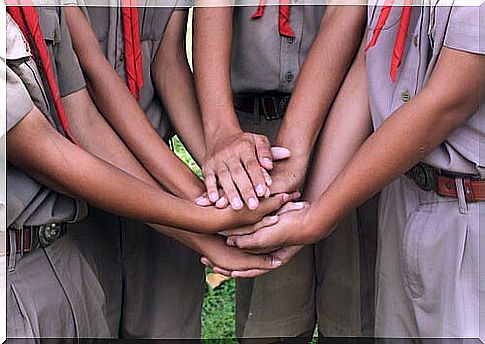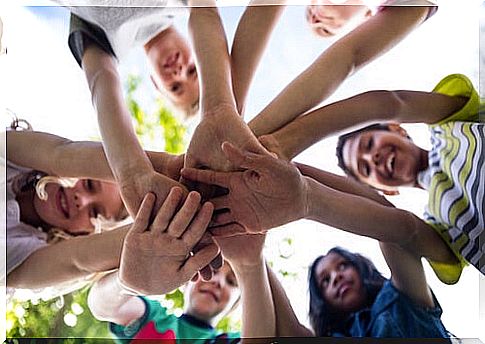The Curious Experiment Of The Cave Of Thieves

The Thieves’ Cave experiment is one of the most classic in the field of social psychology. It was carried out in 1945 at the initiative of Muzafer Sherif and Carolyn Sherif, professors at the University of Oklahoma (USA). Its purpose was to identify the keys that would allow us to better understand social prejudices.
The entire Thieves’ Cave experiment focused on the concept of “group. ” They tried to visualize how the perception of belonging to a certain group is formed, how relationships are configured within this group and how a group relates to others.
They also wanted to identify how conflict appears or intensifies between two groups. When there are two groups in which their members have developed a strong sense of belonging to the group, it seems that at the same time the rejection of non-belonging groups and the characteristics that identify these groups tend to intensify. Also, this can be reversed. Let’s see how they carried out this interesting study.
The Thieves’ Cave Experiment
To conduct the study, the researchers selected 22 11-year-old boys. They were all “normal” children. This means that they did not have a history of bad behavior, they came from stable families, and they did well in school. They were all middle class and none of them knew they were part of an experiment.

After making the selection, the children were randomly divided into two groups. They then attended summer camp in an area of Oklahoma known as Thieves’ Cave State Park. The two groups camped in very distant places. None of the children knew that there was another group.
The Thieves’ Cave experiment was divided into three phases : in the first, the researchers tried to stimulate the feeling of belonging to the group. The second was the friction phase, in which situations were deliberately generated to create conflict with another group. The final phase was the integration phase, in which the researchers were going to try to resolve the conflicts and the apparent differences to be shortened.
Belonging and conflict
During the first week, activities were developed to strengthen internal relationships in each group. The boys hiked together, went to the pool as a group, and did different recreational activities. Each group was asked to choose a name and a flag. One of the groups chose to call themselves “Eagles” and the other “Rattlesnakes”.
In this first stage, it was observed that the members of each group identified with their group and developed a strong sense of belonging. Within days, hierarchies and different internal roles appeared. The links between the members were progressively strengthened within each camp.
In the second week the existence of the other group was made known to them. From the beginning, each group was defensive against the other. The barriers were obvious. The same boys asked the researchers to carry out competition activities between the two groups. They did and even offered a prize to the winner, which was finally the group “Rattlesnakes”.
Thereafter hostility grew remarkably. The friction was frequent, to the point where they refused to eat together in the same place. The mutual rejection grew so much that the researchers decided to put an end to this phase earlier than they had thought, fearing that the confrontational situation would get out of hand.
The power of common goals
In the final phase, the researchers devised activities that required the cooperation of both groups. One of them was to create a fictitious problem. They said that the water reserves had been exhausted because of some vandals (common enemy). They had to solve the supply. To achieve this, both groups worked together.

Later they were told that they would show them a movie that almost everyone liked, but they would have to pay for it. None of the groups was able to complete the amount required of them and again they had to cooperate to achieve the common goal.
After solving several problems together, the mutual antipathy gradually disappeared. So much so that during the return both groups asked to go on the same bus. When they stopped to rest, the “Rattlesnakes” group used the money won in competition to buy refreshments for the 22 children.
The Thieves’ Cave researchers concluded that establishing common problems and, in turn, common goals was a way to resolve conflicts between groups. The researchers postulated the “realistic conflict theory.” In it they point out that the joint resolution of a common problem makes prejudices fade little by little until they disappear.









